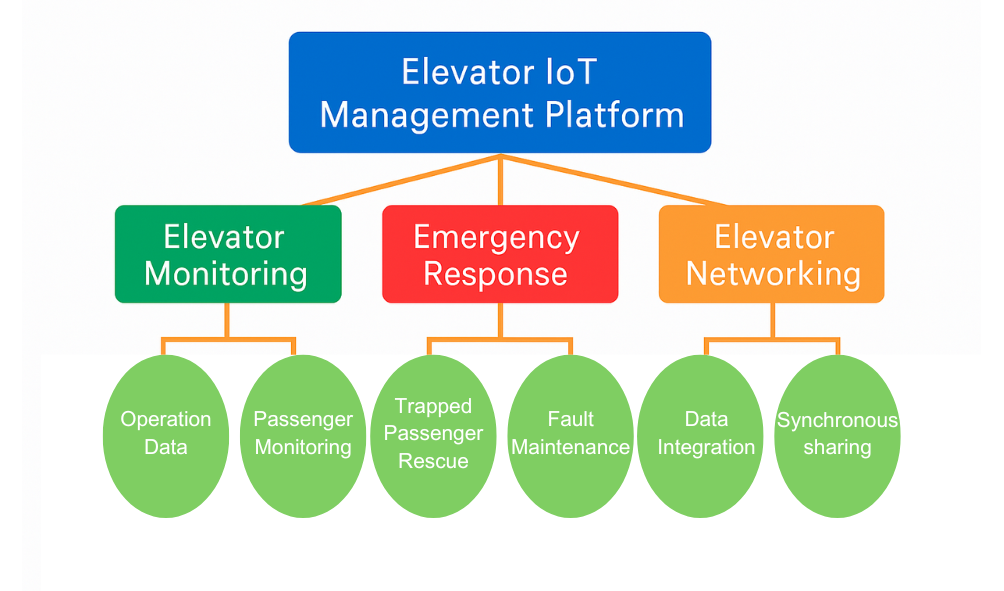The Elevator Internet of Things (IoT) is a major future trend, focusing on the network-based management of both new and existing elevators. Achieving IoT Level 1 integration is a key concern for manufacturers and users alike.
Device Connectivity & Sensor Installation
The foundation of the elevator IoT system lies in the integration of various sensors and network devices:
· Network Cameras: Provide real-time monitoring inside the elevator car.
· Door Sensors: Detect the open/close status of the elevator doors.
· Load Sensors: Monitor the elevator’s weight capacity in real time.
· Temperature & Humidity Sensors: Monitor environmental conditions in the machine room.
· Vibration & Speed Sensors: Track the operational condition and travel speed of the elevator.
· Battery Level Monitors: Monitor the charge level of emergency backup batteries.

Data Collection & Transmission
Sensors installed in the elevator collect operational, video, and audio data in real time. Data can be transmitted through:
· Wireless Networks (e.g., Wi-Fi, LTE, 5G): Send data to a cloud platform or local server.
· Wired Networks: In some elevators, Ethernet Extenders can be installed to utilize the coax or 2-wire within the traveling cable to upgrade the system for IoT connectivity.

Cloud Data Processing & Analysis
All collected data is transmitted to a cloud platform for big data processing and analysis. The platform allows:
· Real-time monitoring of elevator performance to detect potential faults.
· Analysis of usage frequency and energy consumption to optimize maintenance schedules and usage strategies.
· Automatic fault warning, notifying property managers or maintenance teams for preemptive repair, avoiding downtime.
Smart Monitoring & Remote Management
IoT systems enable not only monitoring of individual elevators, but also centralized management of multiple units. Through a central management platform, operators can:
· View real-time elevator status
· Perform remote emergency control
· Generate automatic fault reports
· Plan maintenance schedules
· Use remote diagnostics to reduce on-site inspections and manual intervention
Fault Prediction & Maintenance Optimization
Using big data and machine learning, elevator IoT systems can predict faults and optimize maintenance:
· Predict the failure cycle of specific components based on usage patterns and fault history
· Trigger real-time alerts and maintenance reminders when abnormal data is detected
By implementing these technologies, elevator IoT systems significantly enhance safety, reliability, and energy efficiency, while greatly optimizing maintenance operations and reducing operating costs.